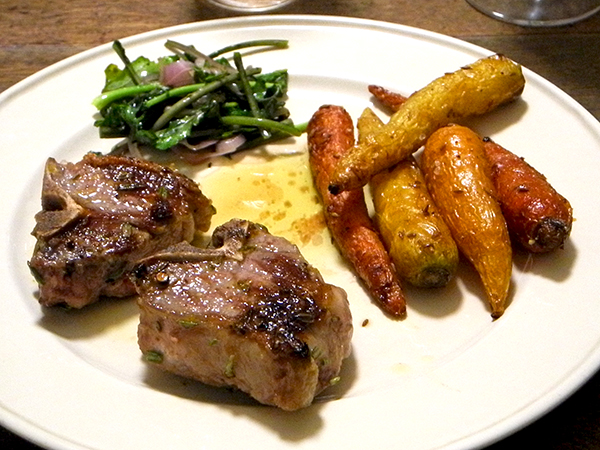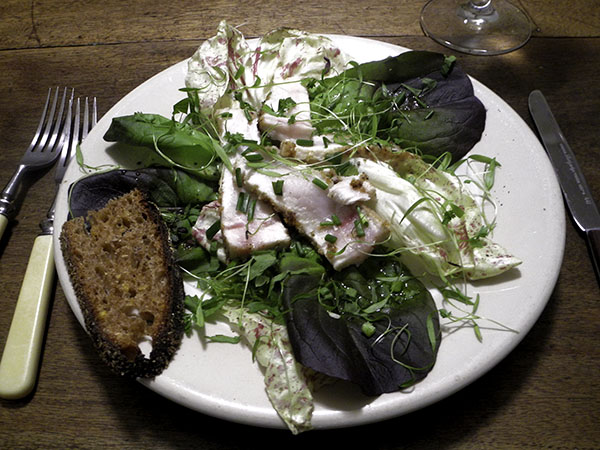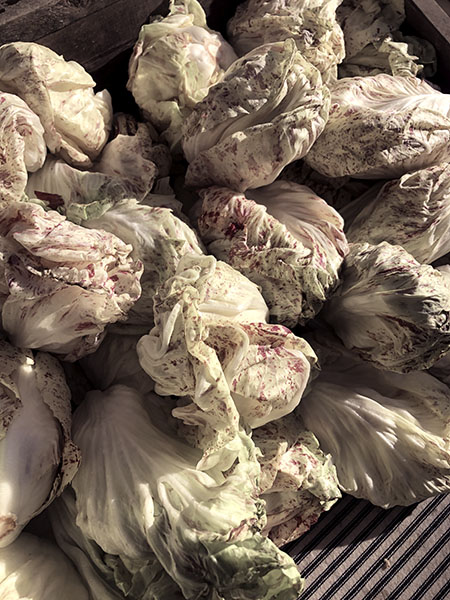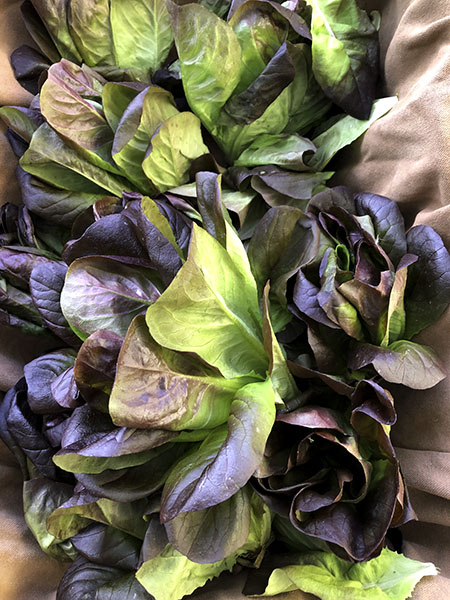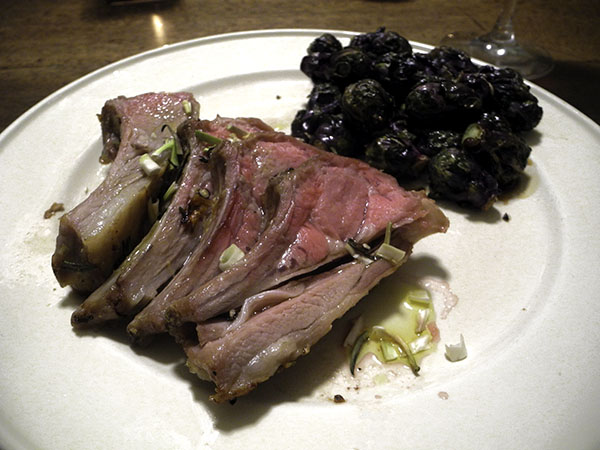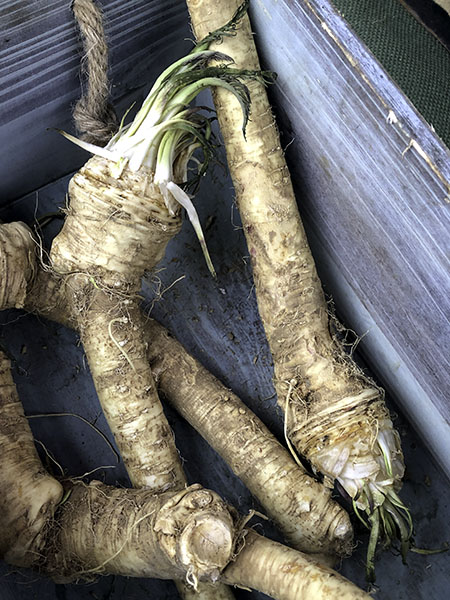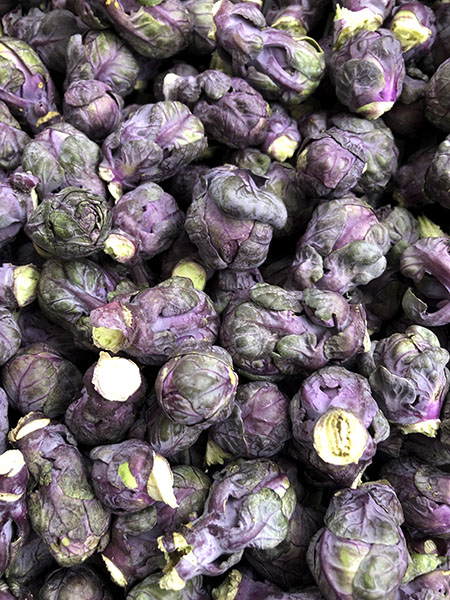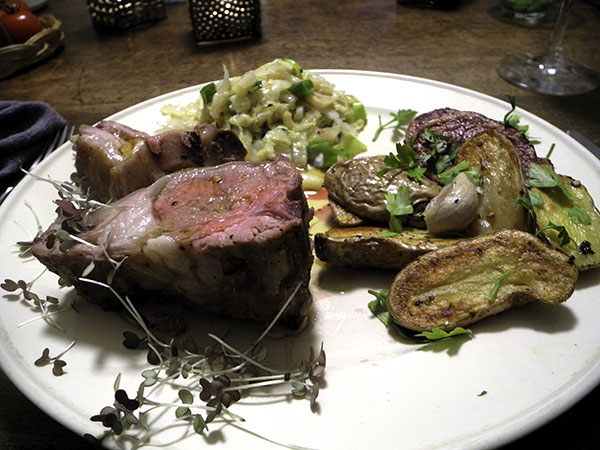
‘ribs’
I grew up in the upper Midwest, where I’m pretty sure the practice of cooking outdoors on a real fire was called a cookout, at least it was way back then. A barbeque, or more often, bar-b-q, was something cowboys had, or at least something that happened in the Southwest. To me it was certainly associated with some not random, but very competitive spicy smokey tomato sauce. Barbecued ribs were the classic form. The entire concept was eventually repackaged as serious casual restaurant food for rugged guys with rugged tastes, guys who probably didn’t know how cook it themselves, or at least didn’t have the time or equipment to do it themselves. These guys didn’t mind messy finger food. I always have, so barbeque has never been much of a thing for me.
Last night we had a cookout at home, although, as a New York apartment cookout, it was actually a cook-in.
There was also no spicy, smokey tomato sauce, and there was no fire, but there really were ribs. They were goat ribs however, which must certainly disqualify the experience as anything associated with the American male appetite.
Except that they were delicious.
In the end, I even abandoned my knife and fork, which I almost never do.
They also didn’t take hours, which meant they didn’t heat up the apartment for hours. Every recipe I saw on line for goat ribs (or lamb, which can be treated in almost exactly the same way) described some form of extended cooking involving the oven, and then I came across this simple suggestion on a New Zealand site for cooking lamb ribs, once they had been marinated:
Preheat a barbecue grill or frying pan to a medium-high heat. Add the ribs and cook until browned and crunchy on all sides – around 15-20 minutes. If you have single ribs they will only take about 10-15 minutes.
I didn’t use its marinade suggestion found there, but the thought that long, slow cooking wasn’t an imperative was a breakthrough. Still, I didn’t fully trust its [only 10-20 minutes!] timing indication, so I started the ribs just before I would be putting the potatoes or asparagus into the oven, knowing that I could keep the 2 vegetables or the ribs warm while finishing the other. Everything worked out fine.
- just over one pound of goat riblets, separated, from Lynnhaven Dairy Goat Farm in the Union Square Greenmarket, rolled in a marinade which included a little chopped spring garlic from Lani’s Farm, one large chopped ramp bulb from Mountain Sweet Berry Farm, a couple tablespoons of Whole Foods house Portuguese olive oil, flowering thyme from Norwich Meadows Farm, the zest from more than half of an organic Whole Foods lemon, a little lemon juice, a few tablespoons of Corvo Sicilian white wine, one tablespoon of dried Sicilian oregano, sea salt and freshly ground black pepper, the chops then set aside covered, on the counter for about one hour, drained, seasoned, and placed inside a large heavy enameled cast iron skillet above a medium high flame, seared on all sides and cooked, turning occasionally, for about 25-30 minutes (at this point I wasn’t watching the clock, but the vegetables) during which time they were checked for doneness – and tenderness – and at some moment the heat was turned down while waiting for the vegetables to finish cooking
- six medium ‘red thumb’ potatoes from Norwich Meadows Farm, halved, tossed with a little olive oil , salt, black pepper, a pinch of hickory smoked Jamaican Scotch Bonnet pepper from Eckerton Hill Farm, and another pinch of home dried habanada pepper, originally purchased fresh from Norwich Meadows Farm, spread across the surface of a medium Pampered Chef unglazed ceramic pan and roasted at 400-425º for a little longer than 20 minutes
- about 11 ounces of thin asparagus spears from Hoeffner Farms and the white sections (the green leaves removed) of 8 or more ramps from mountain Sweet Berry Farm, a handful of thyme branches from Stokes Farm, a little more than a tablespoon of olive oil, a little sea salt, and a bit of freshly-ground black pepper, all rolled along the surface of a large Pampered Chef unglazed ceramic pan, roasted for about 20 to 25 minutes at 400-425º, and near the end of that time, some of the reserved green ramp leaves, roughly-sliced, thrown on top of the asparagus, pushed around with a wooden spatula, the vegetables removed, more thinly sliced ramp leaves laid on top, everything drizzled with a bit of lemon juice
- the wine was a wonderful Portuguese (Lisbon/Estremadura) red, Montaria Reserva Portugal 2016, from Naked Wines (they’re expanding beyond the U.S.)
- the music was Roman Haubenstock-Ramati’s album, ‘Konstellationen’
